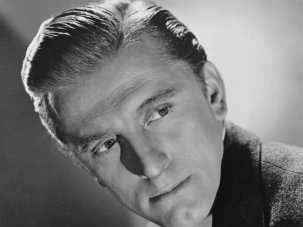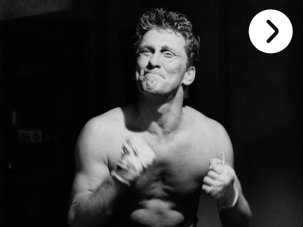Today Kirk Douglas celebrates his 100th birthday. It’s all the more considerable an achievement given that in 1991, aged 74, he was involved in an air-crash that killed two people and left him with a debilitating back injury; and five years later he suffered a stroke that severely damaged his ability to speak. Despite this, having undergone speech therapy, he continued to act, playing his last onscreen speaking role – to date, at any rate – in the melodrama Illusion (2004). He also appeared in a French TV drama-doc, Empire State Building Murders, in 2008, but it was a non-speaking role.
Kirk Douglas was born on 9 December 1916.
You could almost think of it as typecasting. For an actor who based his long screen career largely on playing tough, driven, all but unstoppable characters, such resilience seems almost ridiculously apt. On screen he suffered physical assault even more often than Marlon Brando. He was crucified in Spartacus (1960), had an eye torn out as leader of The Vikings (1958), lost a finger in The Big Sky (1952), died from concussion in Champion (1949), got wrapped in barbed-wire in Man Without a Star (1955), was fatally bitten by a rattlesnake in There Was a Crooked Man… (1970), got run over by a truckful of lavatories in Lonely Are the Brave (1962), and of course lost an ear as Van Gogh in Lust for Life (1956). But Douglas’s sufferings suggested nothing of Brando’s soulful masochism; he faced them with clenched defiance and, if he survived them, came roaring back all the tougher. (That questionable apophthegm, “That which doesn’t kill me makes me stronger”, might have been coined for him.)
Many commentators, not least Douglas himself, would trace his rebellious stance back to his upbringing. Born in the upstate New York burg of Amsterdam, the son of poor Russian-Jewish immigrants, he and his six sisters were brought up by their illiterate mother after their father (the ‘ragman’ of Douglas’s 1988 autobiography The Ragman’s Son) jumped ship. Douglas, eager to escape (“I was dying to get out. In a sense, it lit a fire under me”) and to act, talked his way into a place at St Lawrence University and worked his way through college waiting on tables.
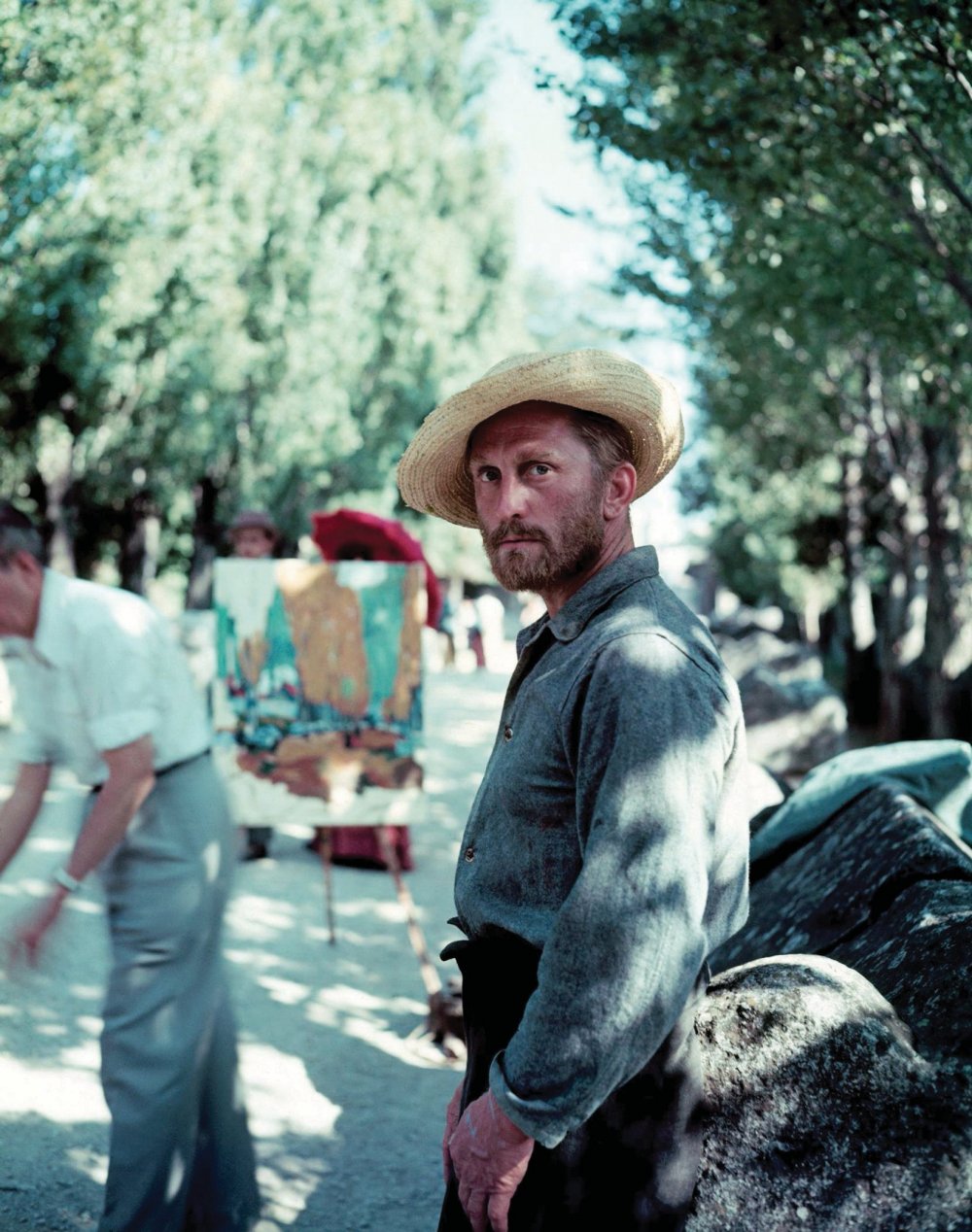
Lust for Life (1956)
As a Jew, he found himself barred from many of the college societies. It’s not surprising then that once established as a Hollywood star, he set out to gain total control over his projects, forming his own production company, Bryna – named after his mother – in 1955. A lifelong Democrat, he favoured maverick directors like André de Toth and Stanley Kubrick, and famously helped break the blacklist that had been established during the anti-communist witchhunts of the late 1940s by giving Dalton Trumbo – one of the banned ‘Hollywood Ten’ – screen credit on Spartacus.
In Douglas’s first film, The Strange Love of Martha Ivers (1946), he played a weakling, Barbara Stanwyck’s alcoholic husband, but that was a rare exception. From there he jumped straight into his default position of grinning ruthlessness as the gang boss in Out of the Past (aka Build My Gallows High, 1947), overseeing the downfall of Robert Mitchum with tight-jawed relish – and thereafter, in his own words, “I’ve made a career of playing sons of bitches.” Sometimes the s-o-bs showed redeeming qualities, but as often as not they didn’t.
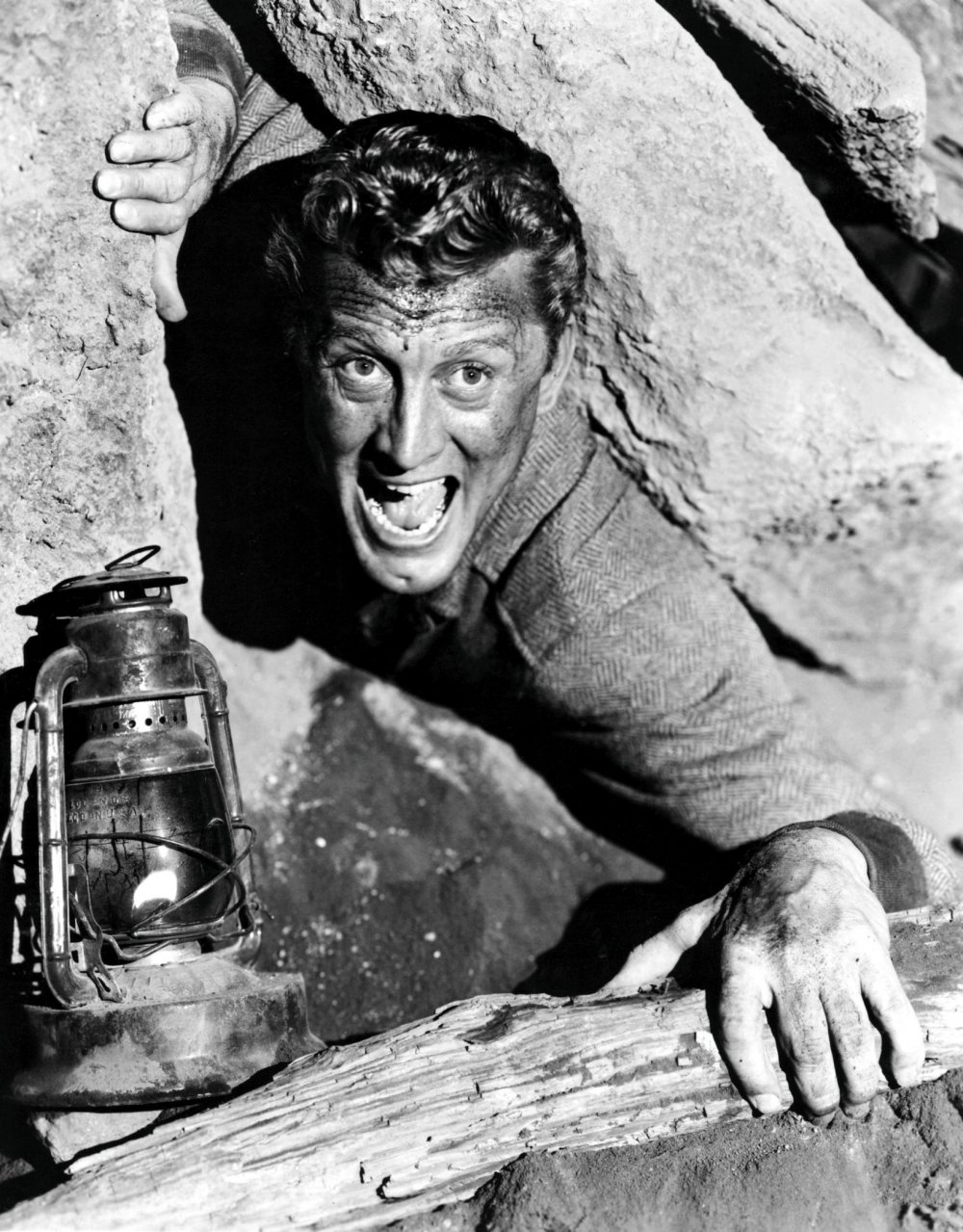
Ace in the Hole (1951)
Not that they were necessarily one-dimensional, for all that. Billy Wilder, with his innate knack for casting, chose Douglas as Chuck Tatum, the scruple-free reporter in Ace in the Hole (1951), exiled to Albuquerque and hoping to earn his ticket back to the big time by exploiting the misfortune of a wretched bozo trapped in an underground crevice. The star is at his most abrasive and reptilian (“I’ve met some hard-boiled eggs in my time,” says Jan Sterling, playing the victim’s wife, “but you – you’re 20 minutes!”), yet in the scenes where Tatum worms his way into the cavern to reassure the trapped guy (Richard Benedict), he exudes sympathy and fellow-feeling. We know he’s faking it, of course, but Douglas plays it so wholeheartedly that we find ourselves wondering if this isn’t a genuine side of Tatum that he’s callously repressed.
Lucky charm
Charm was the essential flipside of Douglas’s driven ruthlessness, and it’s much in evidence in The Last Sunset (1961), a relatively little-seen western from Robert Aldrich. Top-billed is Rock Hudson as straight-arrow Texas Ranger Dana Stribling, who’s crossed into Mexico to bring outlaw Brendan O’Malley (Douglas) back to justice. But Douglas (whom Aldrich found ‘impossible’ to work with) effortlessly walks off with the film, stealing it not only from the stolid Hudson but also from Joseph Cotten, trapped in a dull role as a drunken ex-Confederate officer. Cotten’s married to Belle Breckenridge (Dorothy Malone), who runs their Mexican ranch, and when O’Malley shows up it’s soon evident they have history; he took her virginity when she was a teenager and seems inclined to renew the relationship with her – and start one with her teenage daughter Melissa (Carol Lynley).
Though Belle later – and rather implausibly – transfers her affections to Stribling, both women are clearly captivated by O’Malley, for all that they know he’s a killer. Douglas deploys all his dangerous charm, and further fascinates Melissa with a penchant for rather cheesy nature poetry, courtesy of screenwriter Dalton Trumbo: “Not many people know of it; not many people care, but the sea is a place where the seamen shoe the hooves of the wild sea mare.”
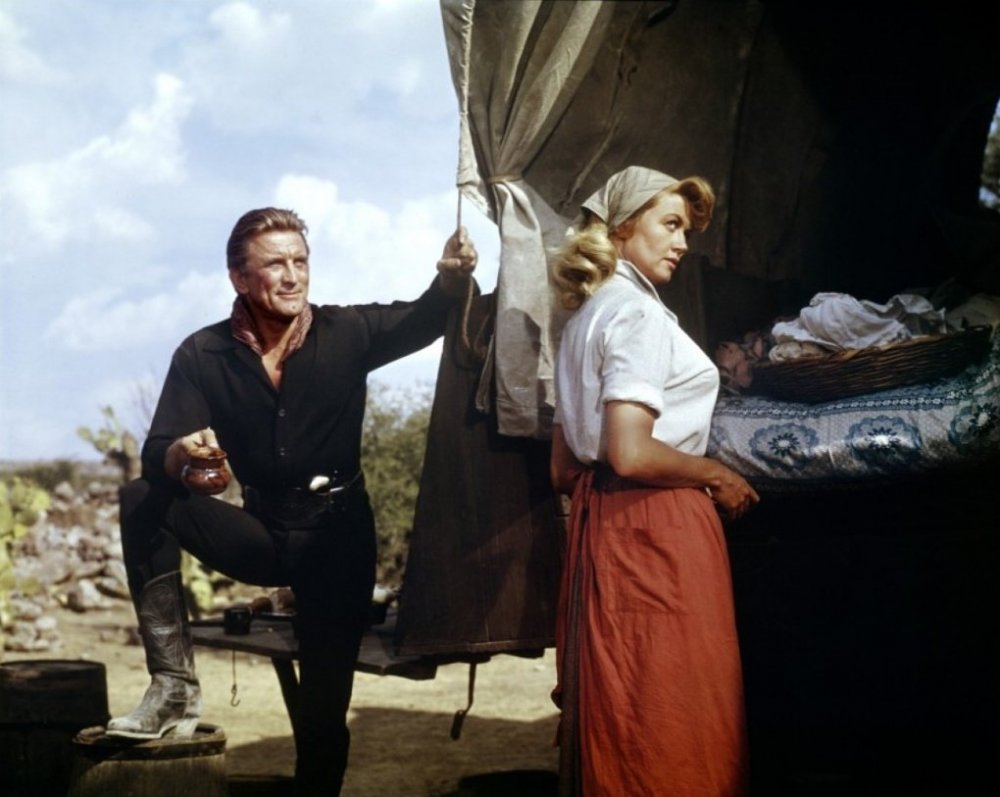
The Last Sunset (1961)
Not many actors could convincingly deliver doggerel like this, but Douglas, with his “smile like ice breaking” (as critic Tom Hutchinson put it), carries it off with style. He even manages to bring off the corny ‘bad man redeemed’ ending without histrionics. About to marry Melissa, he’s told by Belle (truthfully or not, we never know) that she’s his daughter and in effect commits suicide: meeting Stribling in a shoot-out, he draws what proves to be an unloaded gun and is shot dead.
Douglas and Trumbo had form, of course. A year before the release of The Last Sunset, Spartacus had given the blacklisted Trumbo his first screen credit in a decade. Whether Douglas (who was producing through Bryna) or Otto Preminger with Exodus (1960), also openly credited to Trumbo, deserves the accolade of being the first to defy the American Legion and the anti-commie hunters has been much debated; Douglas has always claimed that it was his example Preminger followed, and that’s the line broadly accepted by the recent movie Trumbo (2015). According to Karina Longworth and Matthew Dessem in their article ‘Did Kirk Douglas really break the blacklist?’, it’s a case of “six of one, half-dozen of the other: Preminger announced he would give credit to Trumbo first, but Douglas actually did it first, because Spartacus beat Exodus to theaters by three months”.
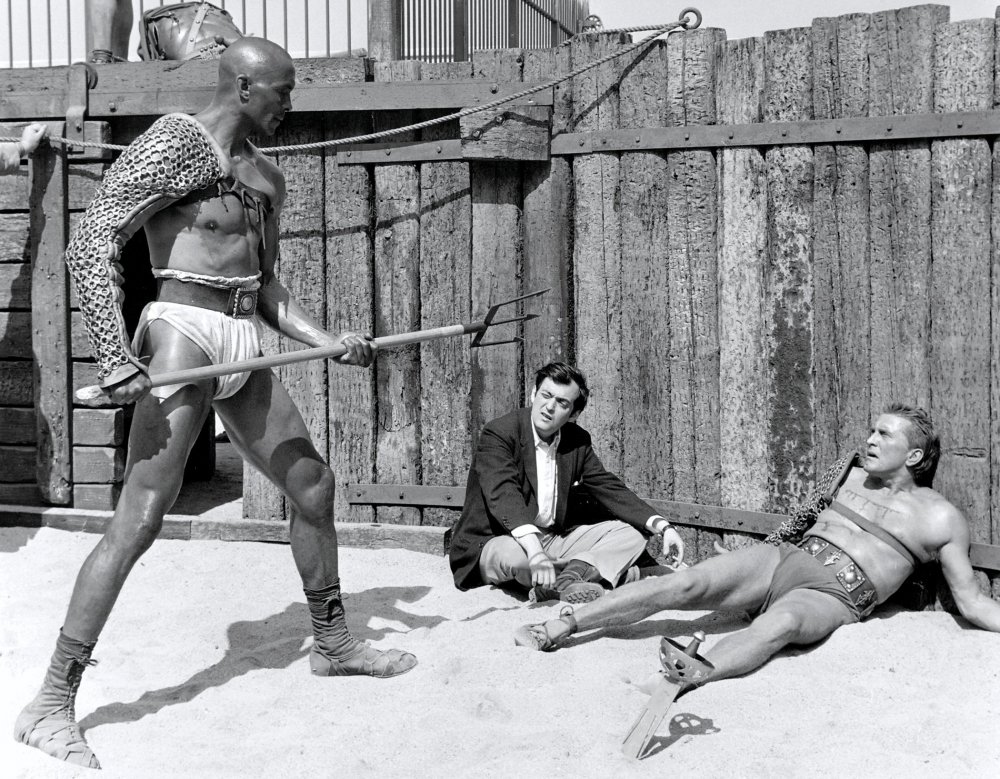
Director Stanley Kubrick with Woody Strode and Kirk Douglas filming Spartacus (1960)
Credit: Photofest NYC
Either way, it was a brave move in the prevailing political climate, and fitted well with the film’s theme of a man intrepidly defying the powers-that-be. Douglas’s performance, though, is one of his least interesting; cut off from the darker side of his screen persona, all he can do is start off heroically courageous and carry right on getting steadily more so. Lines like, “I do know that, as long as we live, we must remain true to ourselves,” don’t help any, coming from an actor so adept at portraying duplicity. This granitic stance is shown up too by the urbane flexibility of actors like Peter Ustinov and Charles Laughton; the latter slyly remarked that when acting with Douglas, “You have to be careful not to act too well.”
There’s more light and shade in Douglas’s previous outing with Kubrick, Paths of Glory (1957). As Colonel Dax, charged with defending three French privates chosen at random to act as scapegoats for the incompetence of their commanders during World War I, he embodies the film’s moral centre; but in his first scene with General Mireau (George Macready) he does a subtle job – mainly through eyes and body stance – of letting his underlying contempt for the man show through the initially amicable banter between the two. (The film so offended the French government that it was banned in the country for 17 years.)
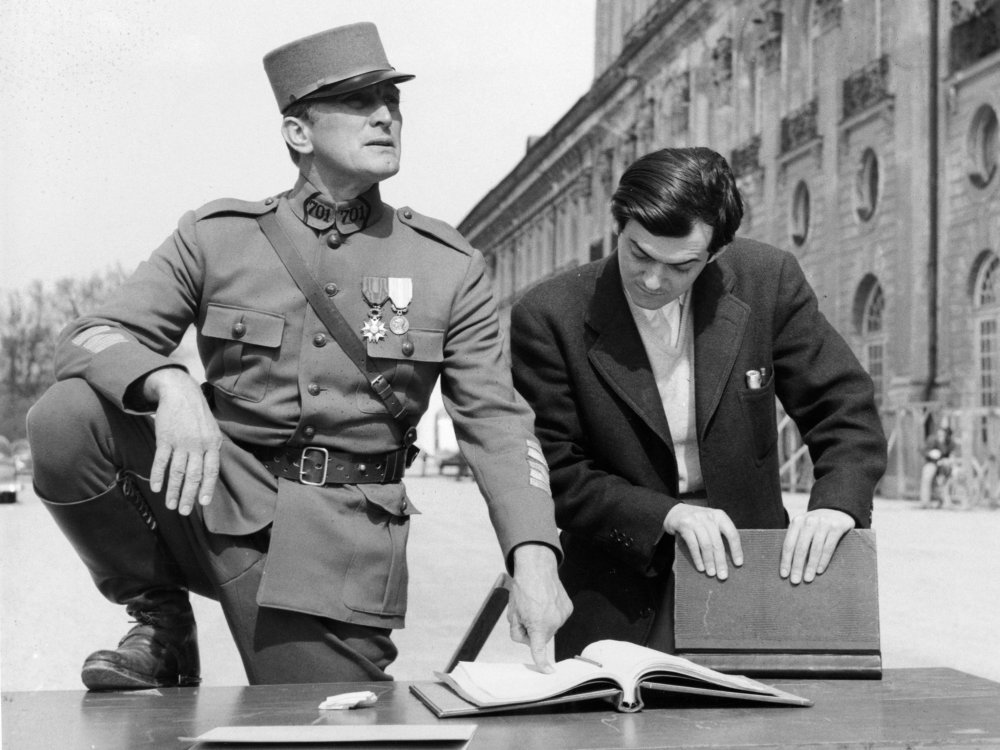
Kirk Douglas and Stanley Kubrick on location at Schleissheim Palace, Munich, Germany for Paths of Glory (1957)
Douglas’s view of Kubrick, whom he invited to direct Spartacus after firing Anthony Mann, was that he was “a talented shit”. The opinion was reciprocated. Douglas’s drive and intelligence were widely recognised – Elia Kazan called him “the most intelligent actor I’ve ever worked with” – as was his tireless dedication to his roles. His preparation was legendary: to play a jazzman based on Bix Beiderbecke in Young Man with a Horn (1949) he studied with trumpeter Harry James for three months; he hired an artist to teach him to paint for Lust for Life, put in nights at an NYPD precinct prior to Detective Story (1951) and even taught himself to juggle for The Juggler (1953). This fierce dedication didn’t always win him friends. The gossip columnist Sheilah Graham described him as “boastful, egotistical, resentful of criticism – if anyone dare give it”; and Photoplay magazine once called him “the most hated man in Hollywood”.
From Graham to Martin Amis (who caricatured him as the monstrously egotistical Lorne Guyland in his 1984 novel Money, drawing on his experience scripting Stanley Donen’s execrable 1980 sci-fi movie Saturn 3, in which the 63-year-old star insisted on a naked fight scene with Harvey Keitel) the downside of Douglas’s character has been amply documented. From the point of view of his career, though, it could be considered an asset. The screenwriter Ben Hecht once told him, “You know, Kirk, you have a really great quality because they love to hate you.” In his breakthrough film, Mark Robson’s Champion, Douglas plays a boxer who treats everyone around him – his manager, his disabled brother, the women in his life – with contemptuous brutality. It won him the first of three Oscar nominations for Best Actor.
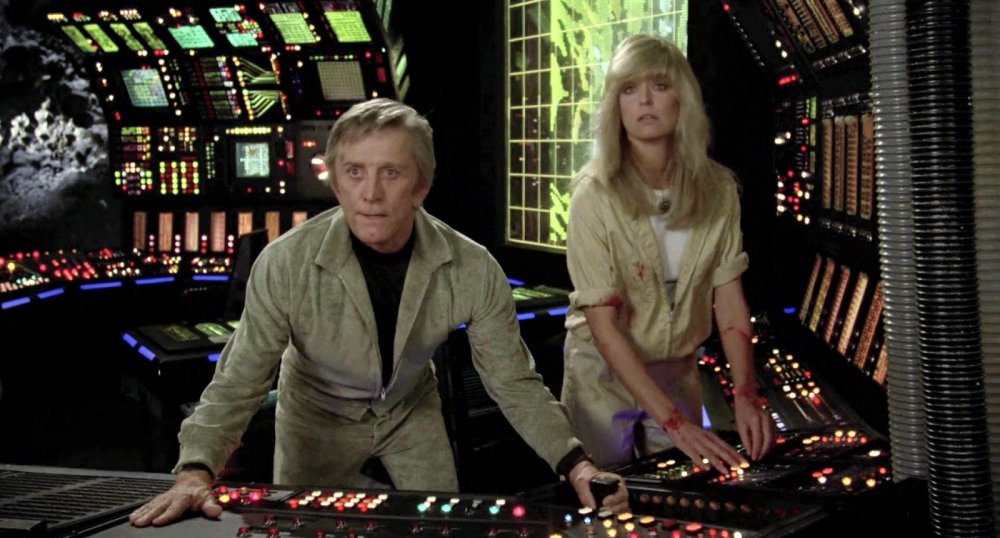
Saturn 3 (1980)
Douglas’s most enduring screen partnership was with Burt Lancaster. The pair made six films together, from the noir thriller I Walk Alone (1947) to the self-consciously elegiac Tough Guys (1986). The most successful of them at the box office, John Sturges’s Gunfight at the O.K. Corral (1956), plays Douglas’s drunken, embittered Doc Holliday against Lancaster’s principled Wyatt Earp. The chemistry between them works best while they still mistrust each other, and begins to lose traction once they join forces against the bad guys. In John Frankenheimer’s political conspiracy thriller Seven Days in May (1964) their usual polarity is reversed, with Douglas’s loyal Marine colonel out to stop Lancaster’s megalomaniac Air Force general from mounting a military coup. Here the level of mutual aggression starts low and builds up, which works a lot better; as a duo, the actors are always at their best facing off against each other.
This may have reflected an element of reality. Frankenheimer later observed, “Kirk Douglas was very jealous of Lancaster; he felt he was playing a secondary role, which indeed he was… He wanted to be Burt Lancaster; he’s wanted to be Burt Lancaster all his life.” Sensitive to the difference in height between them – Lancaster was four inches taller – Douglas often wore built-up heels when they acted together. Lancaster once hid the heels during a shoot by way of a practical joke, to Douglas’s mortification. “Kirk would be the first person to tell you that he’s a very difficult man,” Lancaster remarked at a dinner in Douglas’s honour, “and I would be the second.”
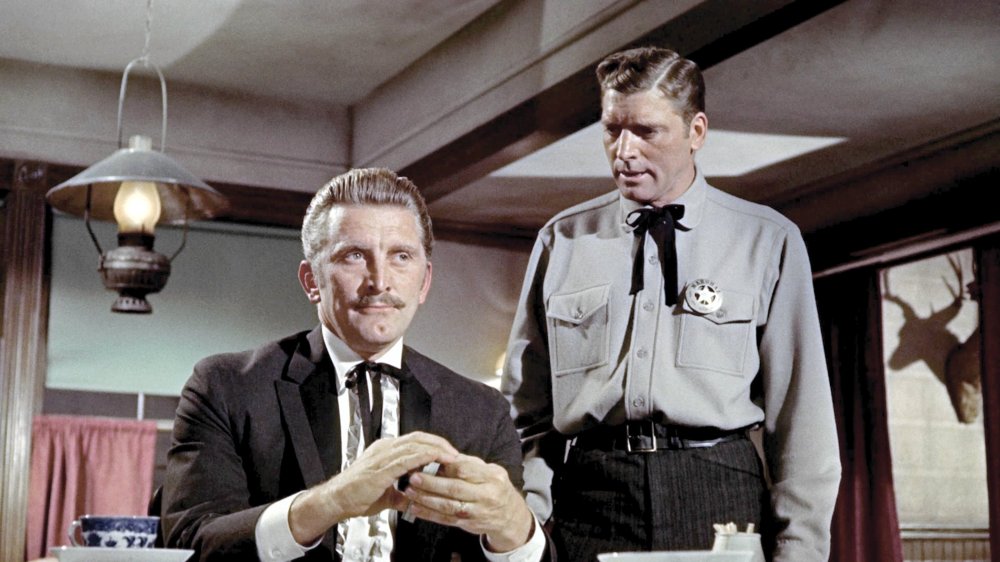
Gunfight at the O.K. Corral (1957)
There were certain genres Douglas was totally unsuited for, such as light comedy. An early effort, My Dear Secretary (1948), in which “I tried to play Cary Grant”, proved as much, but he tried again in For Love or Money (1963), with equally dismal results. But while his blazing-eyed, teeth-clenched ferocity fitted perfectly into out-and-out swashbuckling action films like The Vikings (“A cowboy movie deep down,” he admitted), from early in his screen career it’s always been moral ambiguity that’s elicited his finest performances.
In Vincente Minnelli’s The Bad and the Beautiful (1952) he plays a Hollywood producer (reckoned to be based on David O. Selznick), his career on the skids, who appeals to three people he exploited on his way to the top – a writer (Dick Powell), an actress (Lana Turner) and a director (Barry Sullivan) – to help rescue his latest project. Despite their acrid memories of him, they all finally come on board and, thanks to that Douglas charm (arrogance every so often slipped aside to reveal an underlying vulnerability), you can see why they would.
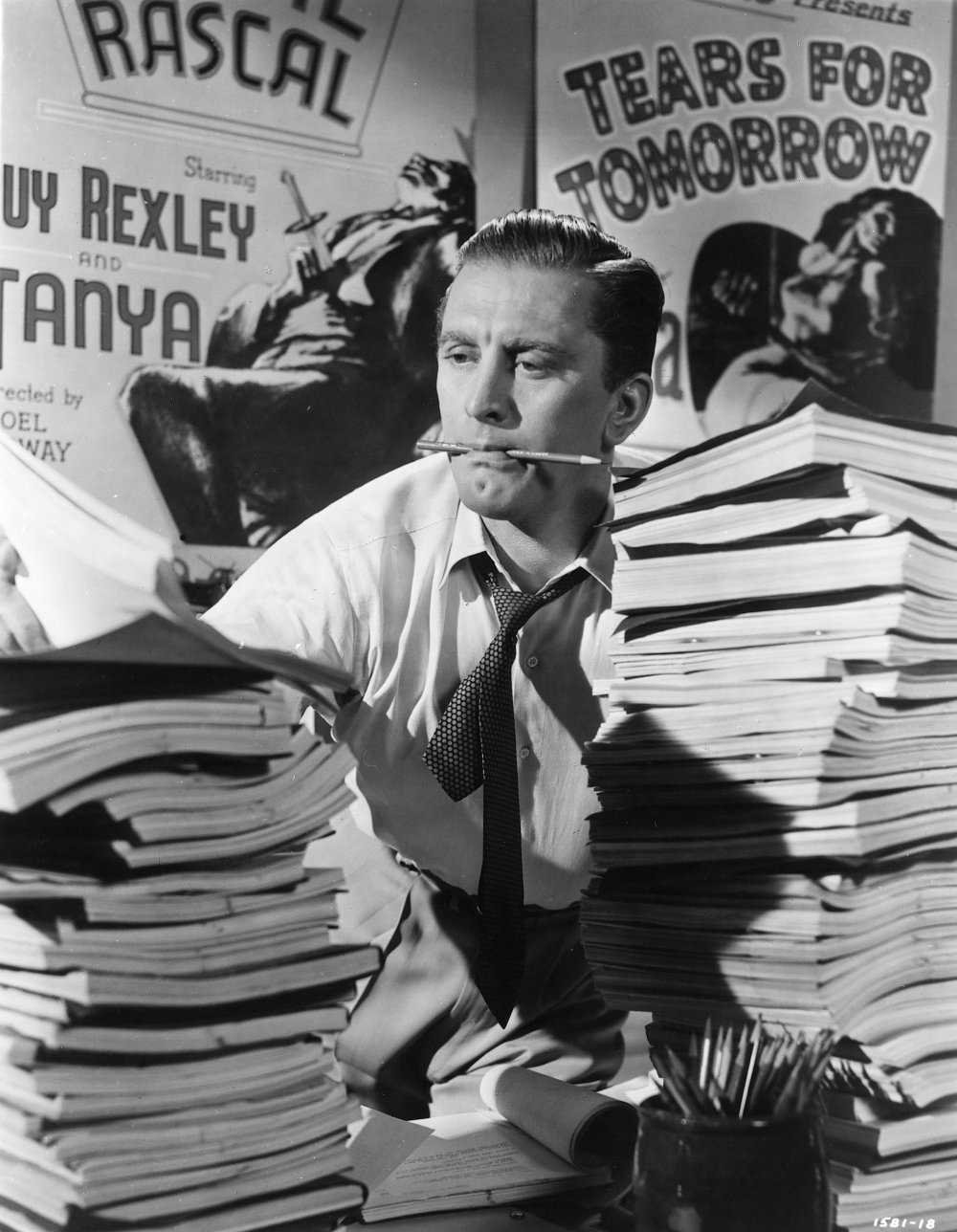
The Bad and the Beautiful (1952)
And it was Minnelli again who cast him as Van Gogh in Lust for Life. Taking full advantage of his physical similarity to the artist, Douglas delivers a deeply felt portrayal of tortured, inarticulate intensity and self-doubting fury that all but overcomes the Hollywood clichés (not least Miklós Rózsa’s overwrought score).
Even this, though, didn’t net him an Oscar: he had to make do with his third Best Actor nomination (the second was for The Bad and the Beautiful) while Anthony Quinn, on screen for barely ten minutes as Paul Gauguin, won Best Supporting Actor. Not until Douglas was nearly 80 did Hollywood finally give him an Oscar – and that was an Honorary award as much for his extensive philanthropic work as for his acting. But to a man who considers movie-making “a form of narcissism”, the lack of the odd accolade perhaps won’t trouble him too much as he reaches his centenary.
-
The 100 Greatest Films of All Time 2012
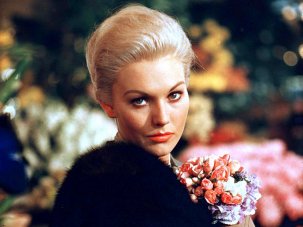
In our biggest ever film critics’ poll, the list of best movies ever made has a new top film, ending the 50-year reign of Citizen Kane.
Wednesday 1 August 2012
-
The Digital Edition and Archive quick link
Log in here to your digital edition and archive subscription, take a look at the packages on offer and buy a subscription.




